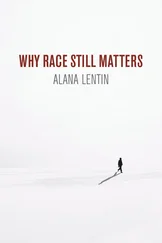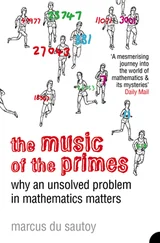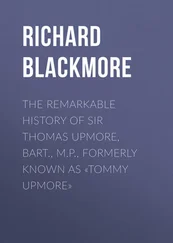1 ...6 7 8 10 11 12 ...15 The day before the conference, like many of the others attending, I signed up for a guided bus tour of Hibbing, Minnesota, the town where Dylan grew up. Hibbing is situated about seventy miles northwest of the city of Duluth, built on the rich iron ore of the Mesabi Iron Range, and at the edge of the town lies the world’s largest open-pit iron mine. Dylan was born in Duluth on May 24, 1941, and grew up in Hibbing after his family moved there when he was six years old. The bus ride itself was memorable and scenic, as we headed north from Minneapolis on Highway 61, the road that follows the Mississippi all the way down to New Orleans, and rode through pine stands, past the Frank Lloyd Wright gas station in Cloquet, then on into Hibbing. We were a busload of about forty-five Dylanologists and assorted Dylan fans, including a young guy whose name tag read Jack Fate—the character played by Dylan in the underappreciated 2003 film Masked and Anonymous, as he was eager to explain to the few who needed explaining. Jack was handing out Highway 61 bumper stickers.
We eventually found ourselves standing in the library of Hibbing High—the magnificent “Castle in the Wilderness,” as it’s known—from which Robert Zimmerman graduated in 1959. Our tour guide, John “Dan” Bergan, a now-retired English teacher at Hibbing High, had been a classmate of Dylan’s younger brother, David Zimmerman. David graduated five years after Bob and was “a terrifically talented musician in his own right,” according to Bergan. Our busload of pilgrims was also treated to a talk by eighty-three-year-old B. J. Rolfzen, who had once been Dylan’s English teacher. You could tell he must have been a dynamic teacher fifty years earlier, engaged by poetry and with a fire for conveying the magic of literature to his students. Music journalist and cultural critic Greil Marcus has described this moment from Rolfzen’s talk:
Presumably we were there to hear his reminiscences about the former Bob Zimmerman—or, as Rolfzen called him, and never anything else, Robert. Rolfzen held up a slate where he’d chalked lines from “Floater,” from Dylan’s 2001 “Love and Theft”: “Gotta sit up near the teacher / If you want to learn anything.” Rolfzen pointed to the tour member who was sitting in the seat directly in front of the desk. “I always stood in front of the desk, never behind it,” he said. “And that’s where Robert always sat.” He talked about Dylan’s “Not Dark Yet,” from his 1997 Time Out of Mind: “I was born here and I’ll die here / Against my will.” “I’m with him. I’ll stay right here. I don’t care what’s on the other side,” Rolfzen said, a teacher thrilled to be learning from a student. With that out of the way, he proceeded to teach a class in poetry.
The Hibbing experience was all part of what later came to seem to me a carefully staged tour. It reminded me of a visit I’d taken a few years earlier to Max Gate, the house that novelist and poet Thomas Hardy designed and lived in on the outskirts of Dorchester in Dorset, England, from 1885 till his death in 1928. Or else it was a bit like visiting the Mark Twain House in Hartford, Connecticut. As a 2016 headline in the CTPost put it, “Mark Twain fan visits his Hartford mansion, finds it’s like communing with a long-lost friend.” Whatever we think we are doing on such journeys, what moves us is the sense of being at the wellspring of artistic creation, where creative genius began to form the art that would become central to our own lives and imaginations. In Hartford, we’re looking for Huck or Tom. In Dorsetshire, we’re hoping to run into some sign of Tess or the mayor of Casterbridge. Likewise, in Hibbing, we were all there looking for something to connect us to the Dylan we had known back in our youth and been with ever since. We were hoping to find it in the magnificent Hibbing High auditorium, where the fifteen-year-old Bob Zimmermann had played with his band, singing and pounding out a Little Richard tune on the piano, as recalled by his then friend John Bucklen:
He got up there … in this talent program at school, came out on stage with some bass player and drummer, I can’t remember who they were, and he started singing in his Little Richard style, screaming, pounding the piano, and my first impression was that of embarrassment, because the little community of Hibbing, Minnesota, way up there, was unaccustomed to such a performance.
I think we could all imagine that event, but in 2007, fifty years after the show, it was hard to get close. Bob wasn’t there, but it was also easy to imagine him up on the stage looking out at the audience in the elegantly upholstered seats of the 1,805-capacity auditorium of which Dan Bergan, who wrote a booklet on the school, rightly noted, in language that, like the auditorium, seemed remote from the hard realities of the Iron Range:
Nowhere in the United States can one find a high school auditorium—perhaps any auditorium—of such incomparable beauty, of such ornate and elaborate decoration … the auditorium features a 40- by 60-foot stage, framed by its 20- by 40-foot proscenium arch whose borders are marked by massive pillars with composite capitals in gold rising on each side of the stage.
Dylan would soon enough be performing at Carnegie Hall in New York and at the London Palladium, but that stage in Hibbing was not a bad place to start. This auditorium must be emblazoned in his mind. The nostalgia involved in the activation and exploration of memory is something that is essential to Dylan—as he said in 1967, “You can change your name / but you can’t run away from yourself.”
After visiting Hibbing High, our group, a little ragged from the warmth of the early spring day, made the short three-block walk from the school down Seventh Avenue, now “Bob Dylan Drive,” to the corner of Twenty-Fifth Street, and the house Bob Dylan grew up in. According to the Iron Range Tourism Bureau, it is no longer open to the public—“drive-by visits only”—but on that day the owner had actually opened its doors and allowed us to go into the front living room, where he had set up a display of Dylan memorabilia on a coffee table. There was a Dylan song playing, I can’t quite remember which one, and I think all of us felt a combination of pleasure at having arrived at such a place, along with slight embarrassment to be intruding in the inner sanctum. I was relieved that a request to visit the bedroom was declined, though some went around the side of the house to look up at its window. The owner of the house told us about Dylan’s own occasional visits over the years. He would spend time up in the bedroom of his old house, presumably making contact with memories of listening on the radio to the music that would form him, first gospel blues and country, later rock and roll. He surely found his teenage self on these occasions.
Lunch was at Zimmy’s, which has since closed as the town continues its economic decline. Some of us bought very unauthorized-looking Zimmy’s T-shirts, along with copies of B. J. Rolfzen’s memoir, The Spring of My Life, a self-published book in ninety-five pages of Courier font—and an interesting account in its own right of growing up poor in post-Depression America. The bus also took us a few miles out of town for a visit to the famous iron ore pit that you can see from the moon. The best ore was long gone, even when Dylan was growing up, and it was easy to connect to the song “North Country Blues” from The Times They Are A-Changin’—a mining blues folk song Dylan would sing at the Newport Folk Festival on July 26, 1963, then once again, for the last time at a concert, at Carnegie Hall, on October 26 of the same year. “This is a song about iron ore mines, and—a, iron ore town,” he said at Newport. The song is in the voice of a woman, as we discover only in the fourth verse, brought up by her brother, who falls victim to the mines, following the same end as her father. In a final blow her husband deserts her and her three children. Dylan had written the song following a trip back to Hibbing, before the public discovered that he had grown up in the town. Andrea Svedberg broke the news of that reality in a Newsweek article published the Monday after the Carnegie Hall concert.
Читать дальше












